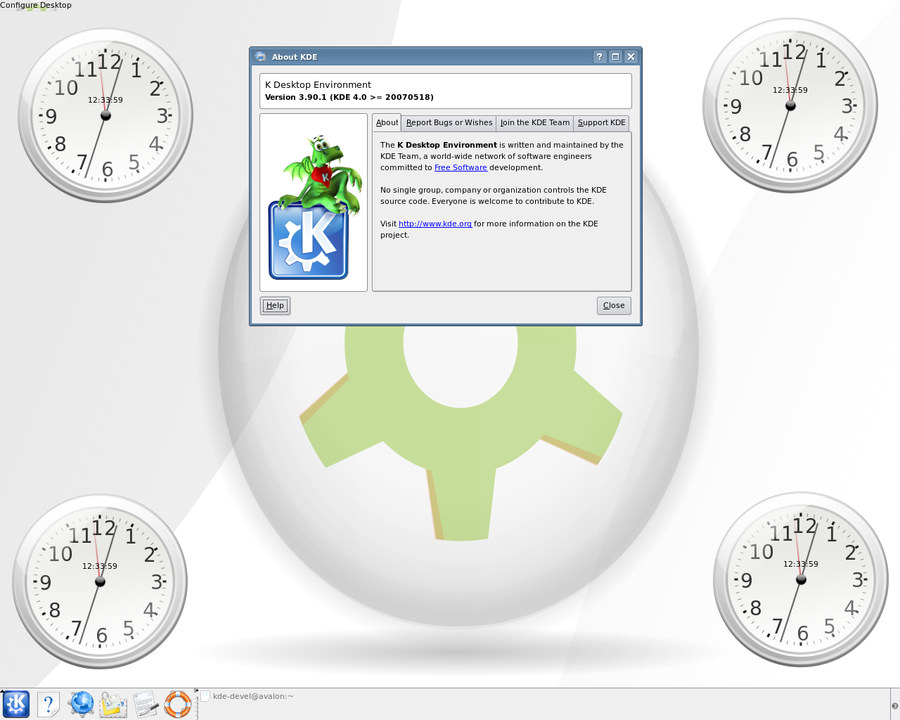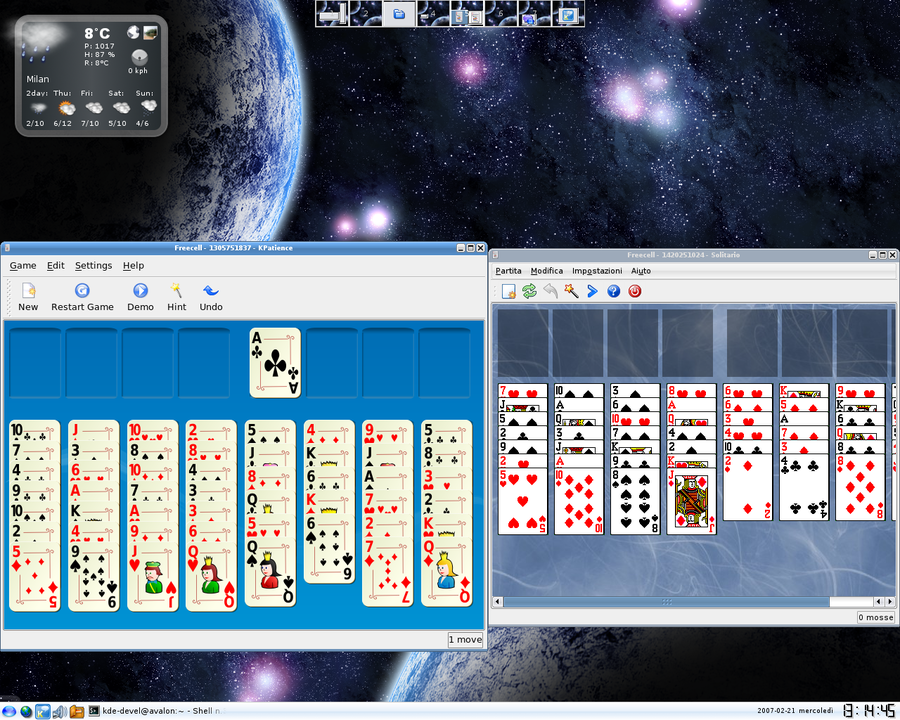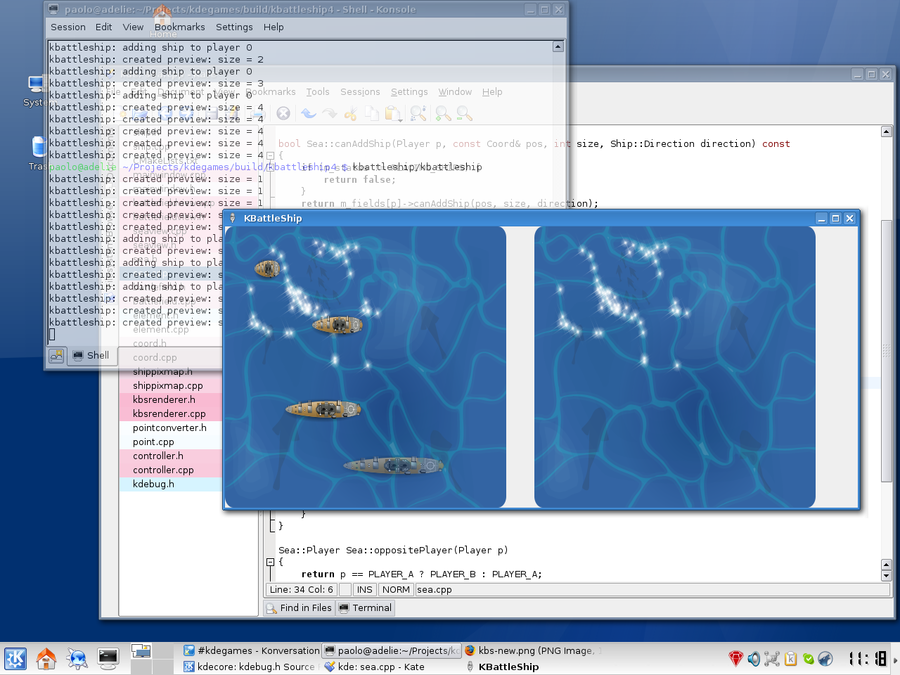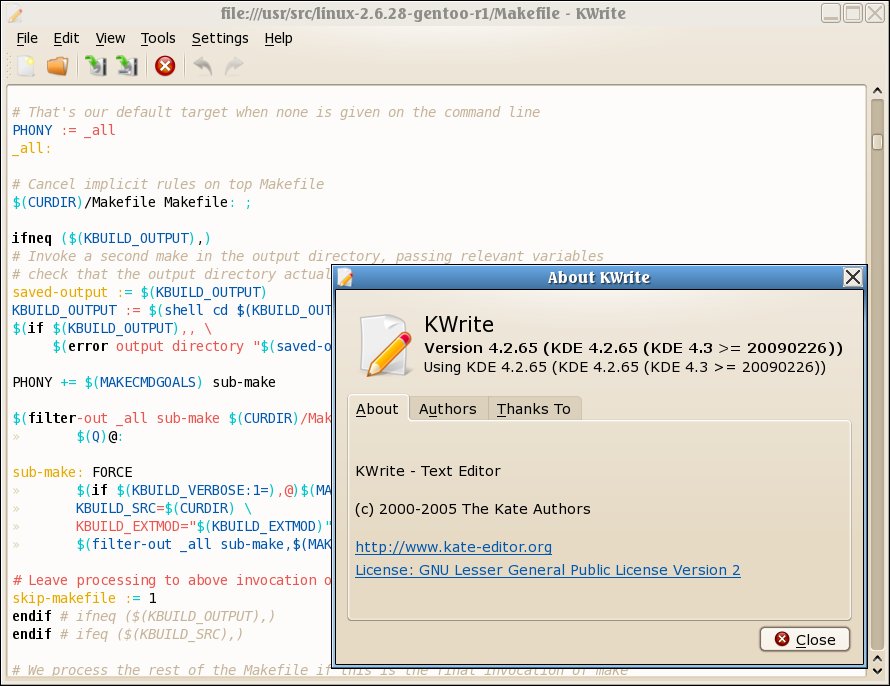KDE 4
KDE 4 was a new major version of the K Desktop Environment released in 23rd October 2007. It was made using the shiny new Qt4 and replaced the stable and perfectly fine KDE 3.5 desktop built on Qt3. It had many new features, frameworks and a much more advanced desktop experience compared to it's predecessor. It also had a whole lot of bugs at it's release.
KDE 4 has since been replaced with a fifth edition of KDE called KDE Plasma.
Look and feel
One major high-light in KDE 4 was the ability to have small programs - not just icons - running on the desktop's root window.
Individual applications ported to KDE 4 remained largely the same as their KDE 3 counterparts. Their looks did change a bit and some lost some functionality. KDE's Solitaire game KPatience lost two of it's games. It's look also changed:
KDE 4 used a new icon set and theme called "Oxygen" which looked decades ahead of anything else available at the time.
Underlying technologies
KDE 4 had many new underlying technologies such the Solid and Phonon multimedia integration. It also got many new kpart functions which allowed for a fancy file-manager called Dolphin and a document viewer called Okular.
The text editing kpart allowed for both advanced text editors with syntax high-lighting, spell-checking and other goodies to be made using relatively few lines of code.
Popularity
KDE 4 faced some initial resistance do to it's many, many bugs. There were a lot in the first few KDE 4 releases. These were eventually ironed out and it was mostly fine when it reached version 4.3.
Many Linux distributions using KDE 4 as the default desktop system, such as KUbuntu and Hannah Montana Linux, gained a large user-base.
Legacy
KDE 4's desktop has been replaced with KDE Plasma 5. Some of the programs written for KDE 4 have not been ported and still rely on Qt4 and version 4 of the KDE libraries. Many distributions will pull a lot of KDE 4 libraries and install them if you install a lesser-know not-upgraded KDE 4 program.
There are no forks of KDE 4 trying to keep it alive. Everyone's moved on to KDE Plasma 5.



